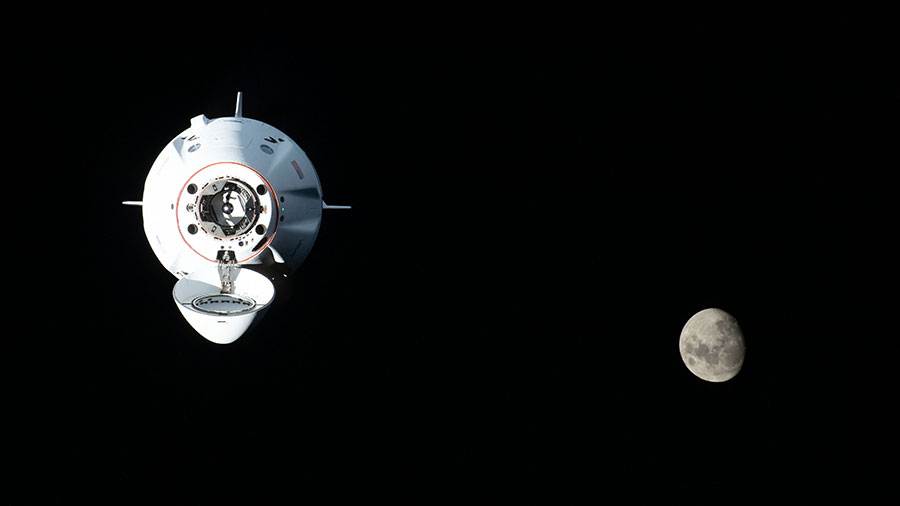Brain Studies on Station Help Astronauts Adjust to Space and Earth

A pair of brain studies were on the research schedule aboard the International Space Station today to learn how the central nervous system adapts to weightlessness. The Expedition 68 crew also worked on variety of household tasks throughout Wednesday including orbital plumbing and electronics system repairs.
NASA Flight Engineers Nicole Mann and Josh Cassada worked on two different experiments investigating separate facets of the human brain and how it adjusts to microgravity. During the morning, Mann attached sensors to herself and measured her arterial blood pressure and blood flow velocity. Results may provide insights into how the brain regulates its blood supply and possibly counteract blood pressure drops astronauts may experience after returning to Earth. Cassada wore a virtual reality headset for the GRASP study exploring how the central nervous system reacts to different stimuli without the traditional up-and-down reference humans are familiar with on Earth.
Mann later joined NASA astronaut Frank Rubio during the afternoon configuring and inspecting a new toilet system in the Tranquility module. Japanese Flight Engineer Koichi Wakata worked in the U.S. Quest airlock swapping electronics components and checking cable connections inside an avionics rack. Wakata and Rubio earlier started their day together collecting their blood samples, spinning them in a centrifuge, and stowing them in a science freezer for later analysis.
The orbiting lab’s three cosmonauts also focused on their complement of advanced space research and station maintenance during the day. First-time Flight Engineers Anna Kikina and Dmitri Petelin took turns exploring how to use ultrasound sensors to assist with targeting and photographing landmarks on Earth. Kikina also cleaned the ventilation system inside the Nauka multipurpose laboratory module while Petelin worked pressurization and water transfer tasks inside the ISS Progress 80 cargo craft. Commander Sergey Prokopyev inspected windows in the Zvezda service module before checking hatch and docking components on the Progress 80 resupply vehicle.
Learn more about station activities by following the space station blog, @space_station and @ISS_Research on Twitter, as well as the ISS Facebook and ISS Instagram accounts.
Get weekly video highlights at: http://jscfeatures.jsc.nasa.gov/videoupdate/
Get the latest from NASA delivered every week. Subscribe here: www.nasa.gov/subscribe
from Space Station https://ift.tt/2lIcQCv
Comments
Post a Comment